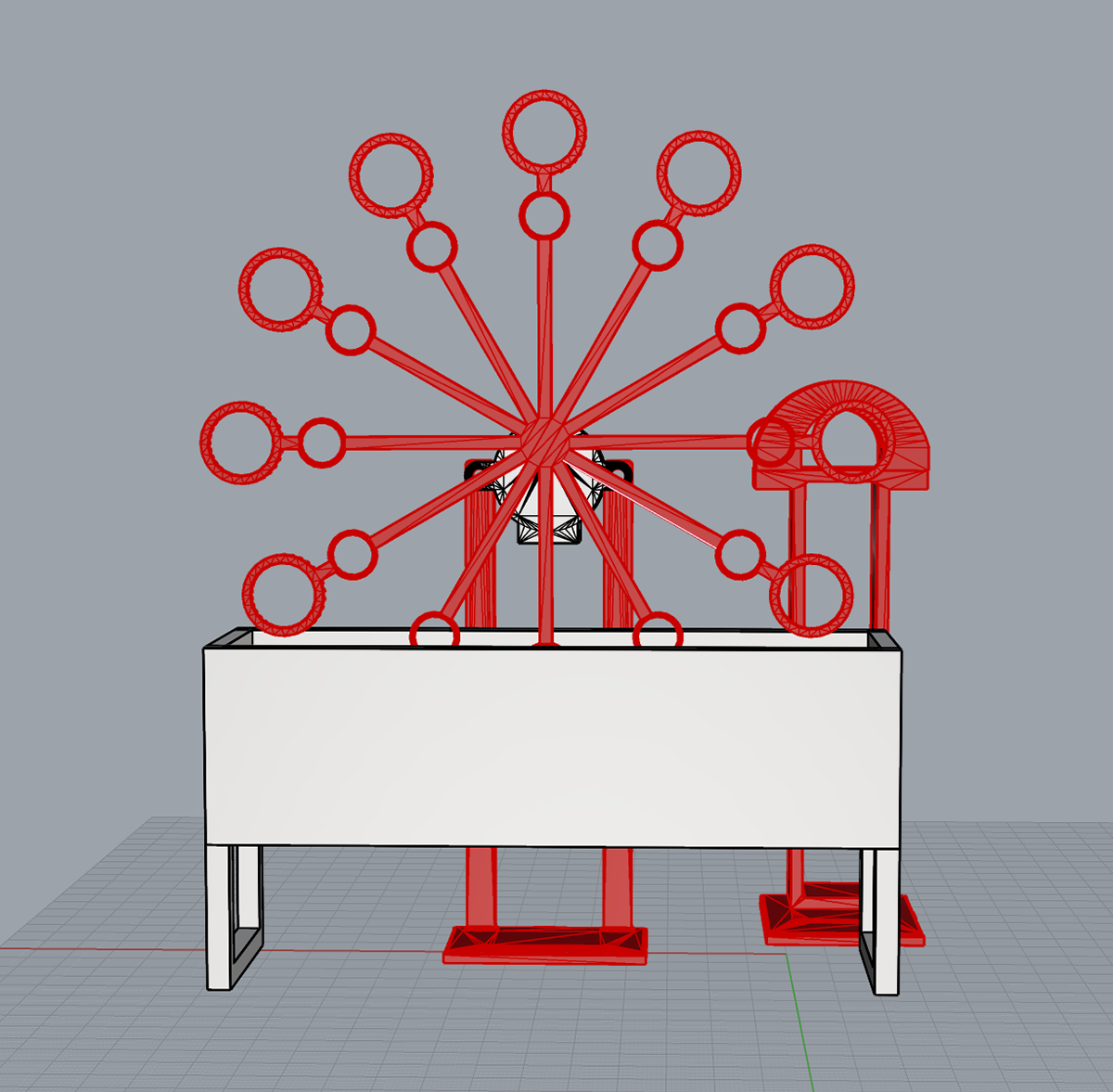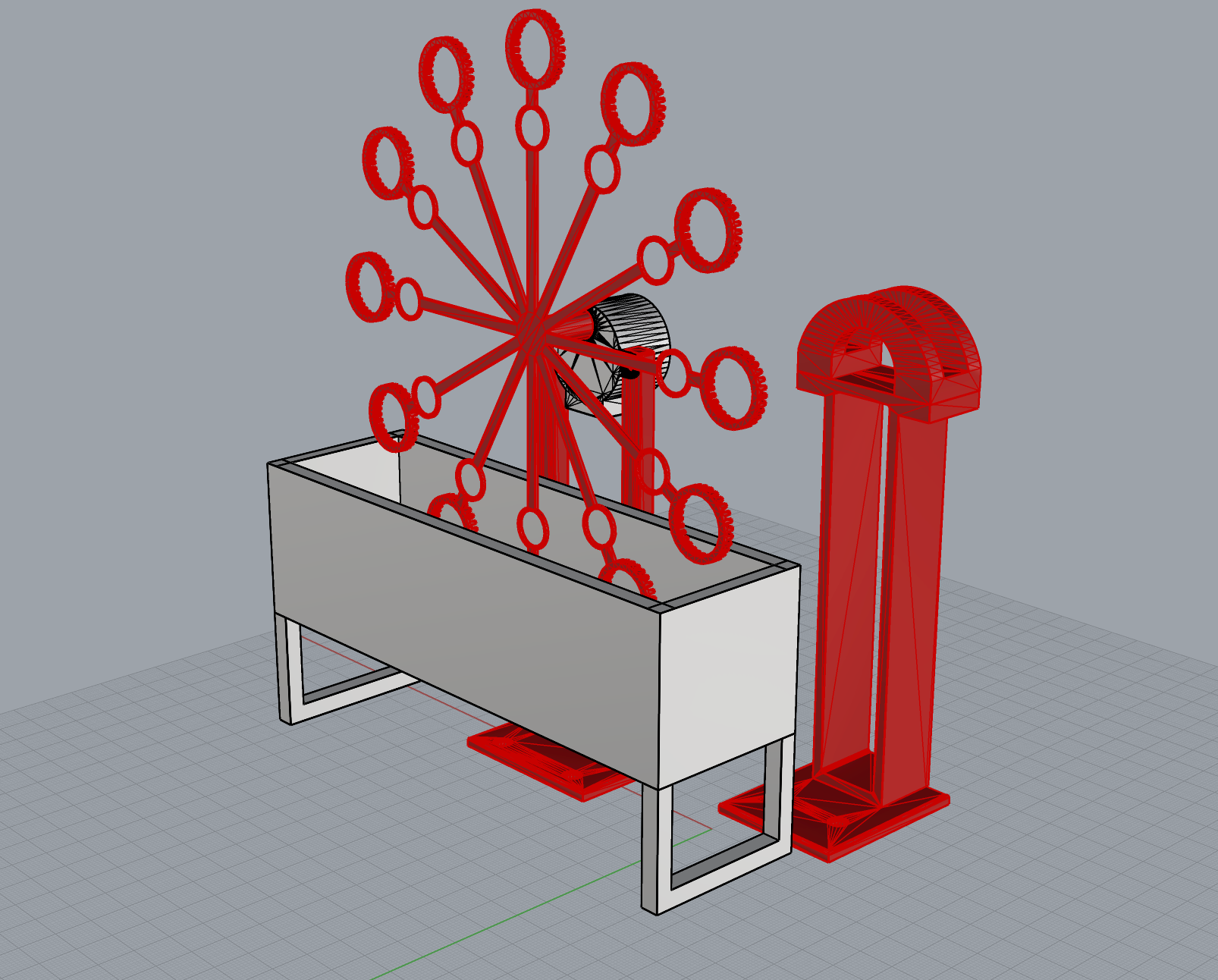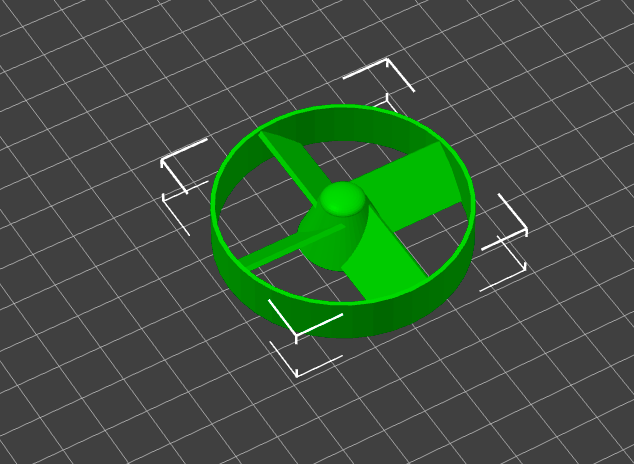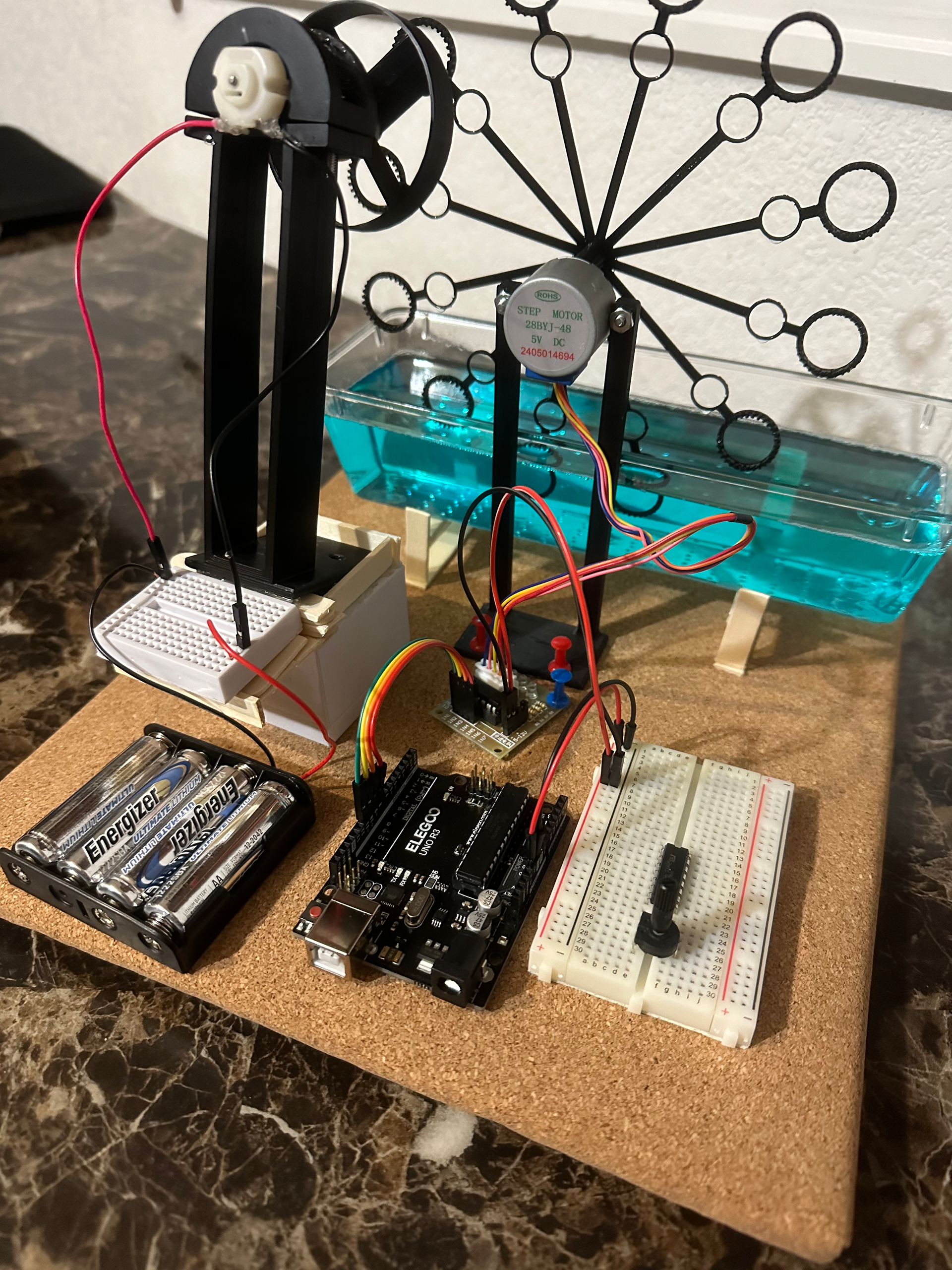Prompt: Groups of 4 will build something “interesting”, using one of the three motor types (basic stepper, servo and DC motor)
Team: Fernanda Villalobos ,Nick Barcalow, Sheena Chan, Yash Chaudhari
Project Chosen
Our group decided that we wanted to create a bubble making machine using our motors. We were inspired by this tutorial. The creator of this bubble machine also included stl files of the motor supports that he had for the stepper and DC motor. We dowloaded and visualized how the different supports would look and the type of container we would need.


Building & Testing
After the motor supports and the bubble wheel were 3D printed, we met as a team to build the circuits and put everything together. Our stepper motor worked as intended, it spun the bubble wheel. However, even though our DC motor did also spin, it wasn't blowing any bubbles. We thought it could either be due to the bubble solution or the strength of the motor.


We then built a circuit using an H-bridge (L293D) for the DC motor, at first it was connected to a 9V battery but then it was switched to 6V battery holder. The circuit worked and both the stepper motor and DC motor did spin when the Arduino was plugged into power. However, there still didn't seem to be enough strength from the fan to blow the bubbles.


Video Demonstration
After testing and trying all the different ways we could change the speed of the DC motor, we decided that a new fan could potentially improve the direction and strength of air being blown towards the bubble fan. We tested and 3D printed a new fan design.


Final design
The final changes that were made to the bubble machine included changing the fan that was connected to the DC motor. This did produce more concentrated air towards one direction, however, it was still not strong enough. The decision to remove the circuit with the H-bridge was made because the DC motor was stronger when it was directly connected to the 6V battery pack. We recognize this serves as a temporary solution because it isn't recommended to leave a motor connected to a battery pack for too long because it could damage the motor. The fan now had enough strength, but it only seemed to produce the best bubbles when it was slightly lifted and leaning forward. A base was created to position the DC motor and fan in the optimal spot for creating bubbles. (Video of bubble machine working shown below)


Final Video